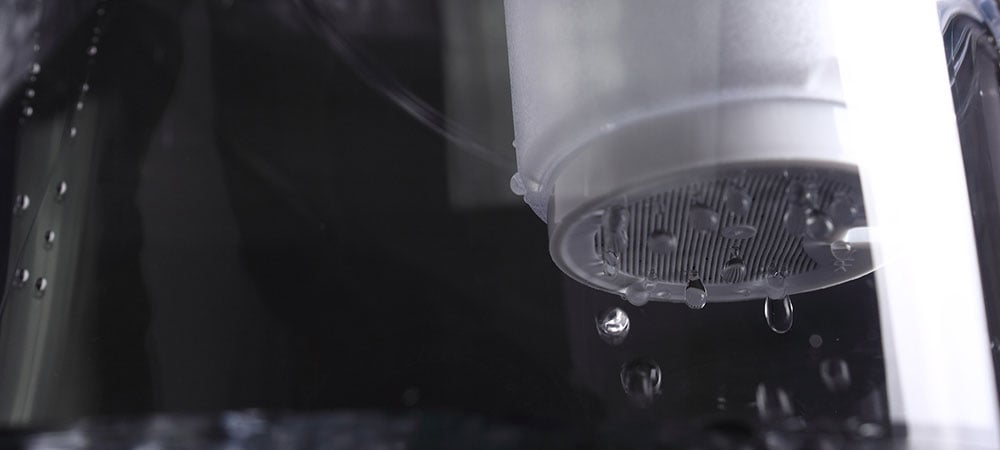
Water filter technology: A primer
August 2020
There are hundreds of home water filters on the market, and choosing one can feel overwhelming.
The good news is that most filter products on the market use one or a combination of three primary technologies: carbon filtration, reverse osmosis and ion exchange. Once you understand how these technologies work, selecting the best one is much easier.
When you're weighing your options, keep in mind these considerations:
- Even filters of the same type can vary in their capacity to reduce the levels of specific contaminants. To ensure that a filter can significantly lower a particular contaminant, check that it has been certified to do so by an independent third-party certification company.
- For some contaminants, there may not be a third-party certification for some contaminants. Thus, a particular filter model that otherwise fits your needs might not be certified for a specific contaminant. But that filter may still help reduce the level of that contaminant in your water.
- EWG provides information on filter technologies that have been certified to reduce common drinking water contaminants. We also point to filter types that may reduce the level of contaminants, even if they don't carry a specific certification. You can find additional tips for choosing a water filter in EWG’s Healthy Living: Home Guide.
About the technologies
Carbon and activated carbon
Activated carbon chemically bonds with and removes contaminants as water flows through the filter. Activated carbon filters' effectiveness varies significantly. Some are certified only to reduce chlorine and improve taste and odor. Others can reduce the levels of contaminants such as asbestos, lead, mercury and volatile organic compounds, or VOCs. However, activated carbon does not remove common inorganic pollutants such as arsenic, fluoride, hexavalent chromium, nitrate and perchlorate.
In general, carbon filters come in two forms: carbon block and granulated activated carbon.
- Carbon block: Carbon block filters contain activated carbon that is shaped into blocks under high pressure. They are usually more expensive than granular activated carbon but are generally more effective, because they have more surface area that comes into contact with your water. However, they may need to be replaced more often. Their effectiveness depends in part on how quickly water flows through the filter.
- Granulated activated carbon: These filters contain fine grains of activated carbon. They are usually less effective than carbon block filters, because they have a smaller surface area of activated carbon that comes into contact with water. Their effectiveness depends on how quickly water flows through the filter.
Reverse osmosis
Reverse osmosis systems sold for home installation typically include one or more activated carbon and sediment filters, allowing such systems to reduce or remove a large number of contaminants. The initial activated carbon treatment captures and removes chlorine, trihalomethanes and VOCs. Next, during the reverse osmosis filtration, tap water passes through a semipermeable membrane that blocks any particles larger than water molecules. As a result, reverse osmosis systems effectively remove many contaminants, such as arsenic, fluoride, hexavalent chromium, nitrates and perchlorate.
Wasted water is the primary drawback of reverse osmosis systems. These systems typically take in five times more water than they produce for use, and the unused “reject” water is flushed down the drain.
Additionally, reverse osmosis treatment removes minerals that improve the taste of water and are essential for health, such as iron, calcium and magnesium. Manufacturers of reverse osmosis systems may offer different options to address this problem, such as the addition of mineral drops for remineralization.
Ion exchange and water softeners
Water softeners typically use an ion-exchange process to reduce the levels of calcium and magnesium, which can build up in plumbing and fixtures, as well as barium and radium, which can be found in tap water. The levels of other contaminants usually remain unchanged.
Since water softeners replace calcium and magnesium with sodium, doctors may advise people with certain health conditions, such as those who wish to maintain a low-sodium diet, to avoid softened water. Softened water is not recommended for watering plants and gardens.
Distillation
This technology heats your water enough to vaporize it and then condenses the steam back into water. The process removes minerals, many bacteria and viruses, and some chemicals that have a higher boiling point than water. But it does not remove chlorine, trihalomethanes or VOCs from water. Home distillation systems are less common than other types of available water filters available.
Whole house filters
Whole house filters are installed at the point where water enters your house, so that all your taps and appliances receive filtered water. This type of system is expensive compared to point-of-use filtration and is not necessary in most cases. Since whole-house systems also remove chlorine, they may introduce the additional risk of harmful bacterial growth in plumbing.
Whole house reverse osmosis filtration systems waste a large amount of water. For this reason, EWG recommends a point-of-use filter and suggests that reverse osmosis-treated water be used for drinking and cooking only.
